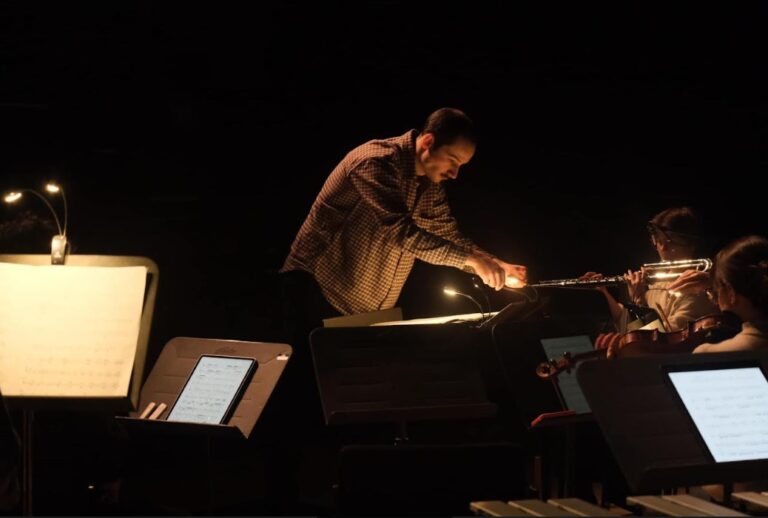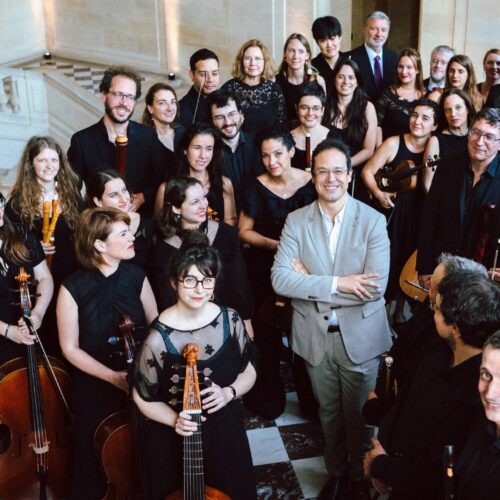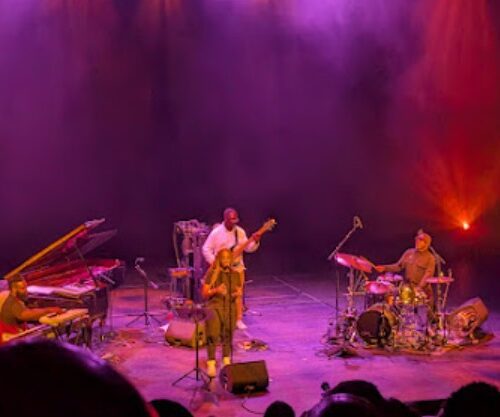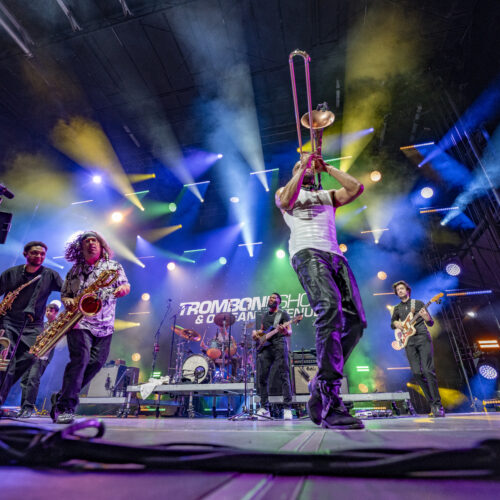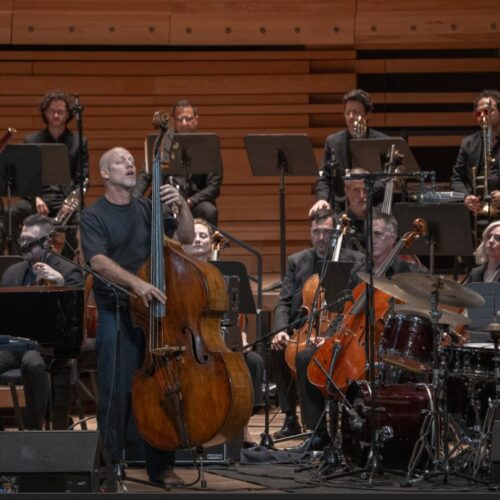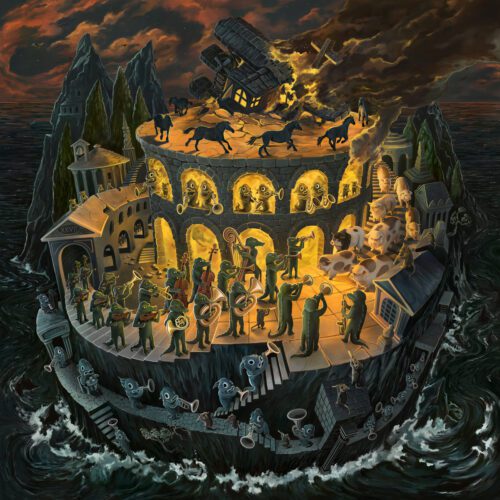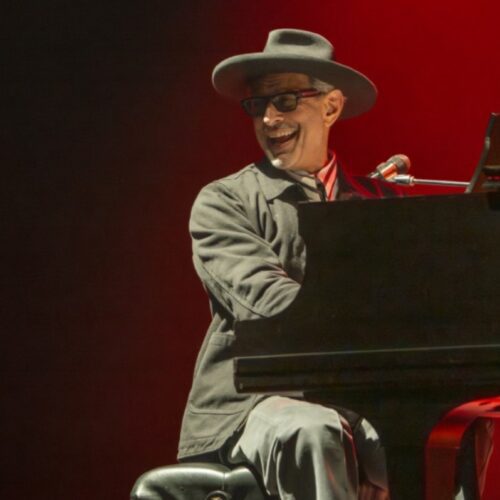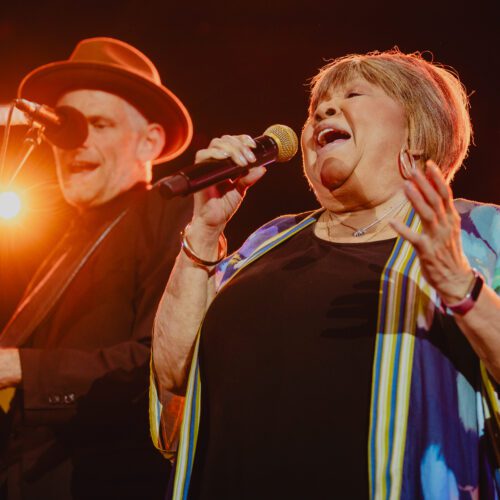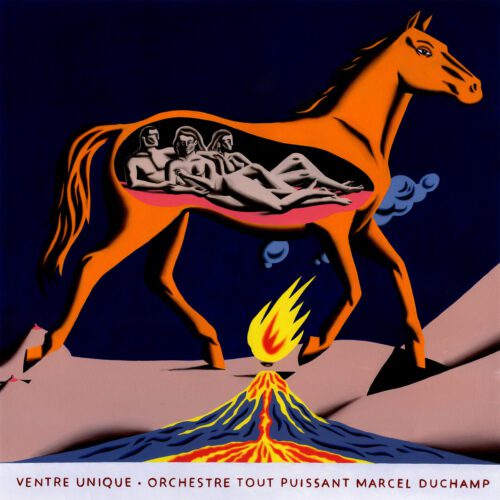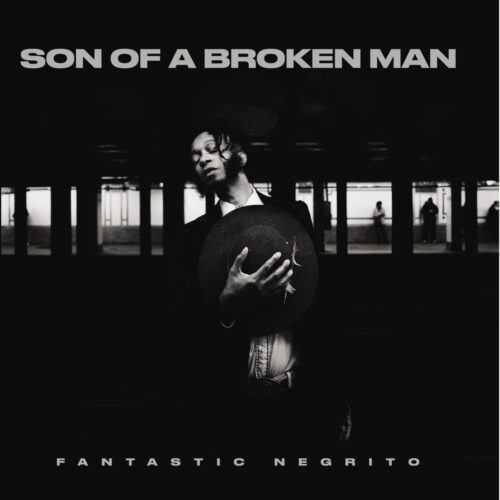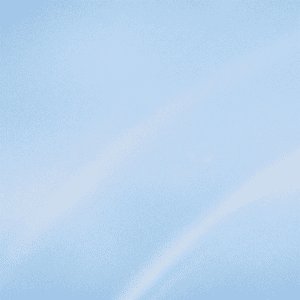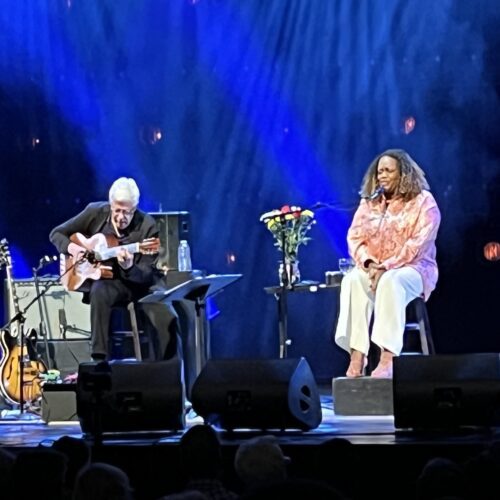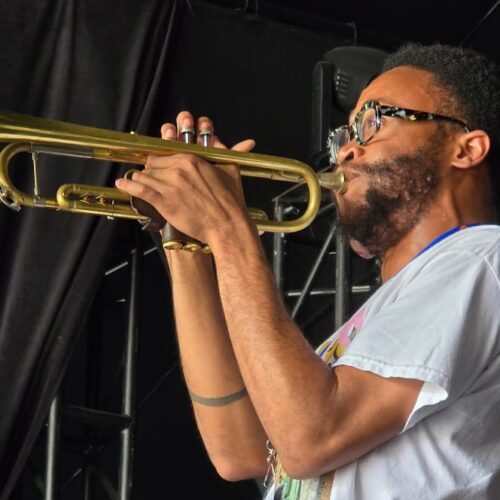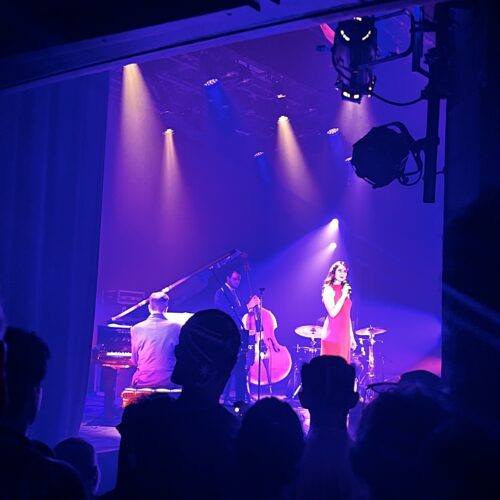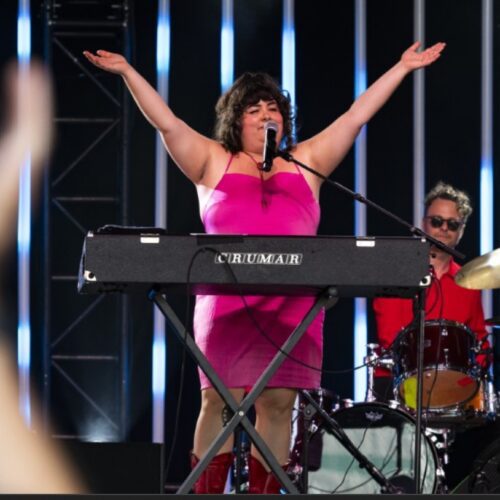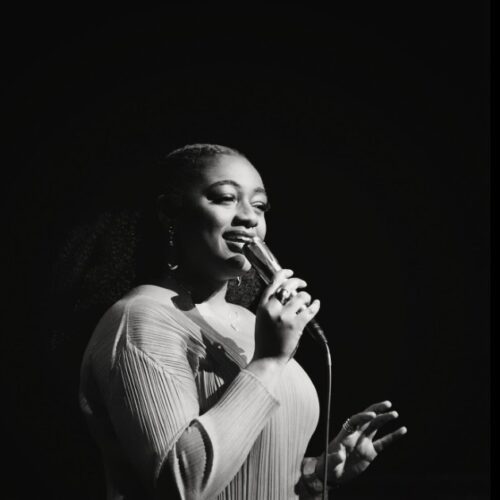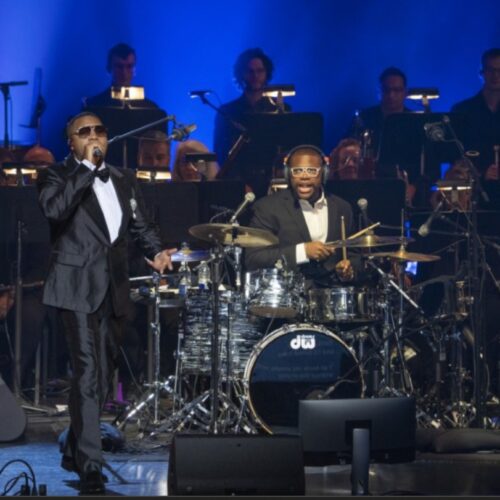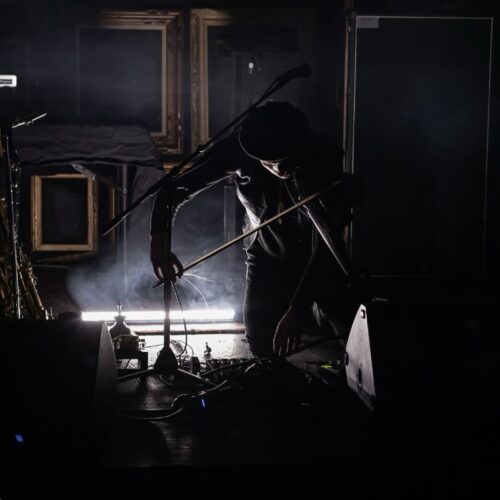It was opening night last Friday at the Espace Orange in the Wilder Building in Montreal’s Quartier des Spectacles. Ensemble Éclat, a new contemporary music chamber orchestra made up of 13 up-and-coming Montreal musicians and directed by Charles-Éric Fontaine, gave its very first concert to a packed house, which was a pleasure to see.
In that packed house, I was certainly one of the oldest. The average age must have been around 30, maximum. Well done. That said, there were all the friends, girlfriends, boyfriends and a few relatives in attendance. Maybe it won’t always be like this. But let’s not spoil the fun with that detail. More on that later anyway. Training, professional guidance in terms of managing this type of project, publicity, promotion, administration, funding applications, etc. was supported by the Pôle Relève from Vivier, an umbrella organization for contemporary music in Quebec. The Pôle is itself solidly funded by the Conseil des arts et lettres du Québec (CALQ). Bravo, then, to all these people for their commitment to cutting-edge, much-needed projects.
I’ll start with the flowers. The 13 young artists in the ensemble (see list below) are very good. The scores on offer are of different technical natures, but it’s clear that we’re dealing with a high-level up-and-coming generation that has nothing to envy the previous one. Precise coordination, beauty and instrumental mastery, plus Fontaine’s highly committed, sharp and emphatic conducting.
The program featured five works by as many composers: two up-and-coming talents (Adrien Trybucki and Quentin Lauvray) and three “classics” (Hans Abrahamsen, Kaajia Saariaho and Toru Takemitsu). The program alternated between “agitated” and “calm” pieces. A logical choice.
Between Trybucki and Lauvray, the former’s Trabum made the strongest impression on me. Over an initial drum-driven pulse, a subtle but irremediable rhythmic shift ends up sending through the window. What follows is a sort of continual search for the original order. At one point it almost succeeds, but in the end defeat is inevitable. Well organized (!) and finely textured. Worth remembering.
Lauvray’s Au bord de la nuit (At the Edge of the Night) is a piece to be noted for its abundant writing. There are tons of ideas here, perhaps even too many. There’s even a harmonica and a kind of slide kazoo, noticeable in a couple of short interventions.
Fun, but why? In the end, it seems gratuitous, as if to say: “Look, I can generate all sorts of amazing colors!’’ But it’s not part of a justified holistic discourse. For all its technical and objective qualities, Au bord de la nuit ultimately resembles dozens of other pieces coming out of universities around the world, filled with squeaks, dots (points) and sustained notes which I call pointraitism (points + traits, or lines,, forgive my attempt at neologism…).
A language that claims to be contemporary, but applies a well-learned recipe that’s been around for almost 75 years. ‘’Avant-garde” music… in conservative clothing. It’s amazing, when you think about it, to be able to lump these two terms together.
There was also Hans Abrahamsen’s Liebeslied, directly following the Trybucki, a totally ethereal piece, like a thin translucent veil, barely animated by a few murmurs of movement on the surface. A necessary contrast after the nervousness of Trabum.
The central work was Toru Takemitsu’s Rain Spell. As if influenced by the title, we were quickly captivated, bewitched, by the Japanese composer’s surgically limpid yet subjectively poetic writing. Alto flute, clarinet, harp, piano and vibraphone are gently intertwined in a slender, beautifully colored writing style. Drops of sound against a backdrop of tender luminous radiance, Takemitsu’s writing is quite simply one of the most spellbinding of the 20th century. The rendering was excellent. A beautiful moment.
The last piece on the program, just before the Lauvray, Saariaho’s Fall is written for harp with (very discreet) electronic accompaniment. A lot of quivering of the instrument’s strings evokes a kind of scintillating impressionism, but resolutely modern. Very beautiful.
A balanced program, then, between novelty and tradition, but deliberately restricted within the bounds of what a certain establishment calls “contemporary music”. In this sense, Ensemble Éclat, although its mere existence is good news in itself, has not indicated in this first public exercise to be anything other than a NEM (Nouvel Ensemble Moderne) no.2. Not even 2.0. Let’s be honest: particularly speaking of the two very recent pieces, this is music still associated (not entirely wrongly) with the so-called Ivory tower.
Perhaps this is where the problem lies, and where I’ll be using the pot I promised earlier (without exaggerated violence, I hope). I love this music, and I know that Montreal is one of the best places in America for it. And, while it’s vital to support its dissemination and influence, I confess to having expected, perhaps naively, a truly “contemporary” proposal.
As mentioned above, this music has been around for almost three quarters of a century. It can no longer reasonably be called contemporary. Mozart was modern in his own time, at the end of the 18th century. Writing like him in 1850 was not. But for the generation of musicians in their twenties and thirties, “contemporary music” goes far beyond rigorous, formal atonalism. It embraces Stockhausen, Ligeti and Rihm as well as Adès, Reich, Andriessen, and even Herrmann, Morricone and Williams. It includes Caroline Shaw, Nicole Lizée, Kate Moore, and invites Autechre, Babe Terror, Muse, GYBE!, Owen Pallett, Lubomyr Melnyk, Kendrick Lamar, post-punk and growling metal to the table, to name but an infinitesimal part of the current stylistic family. Yes, I would have liked an ensemble of the current generation (Alpha?) to mark its birth with a trans-stylistic dialogue, including a certain conservative avant-garde (there’s that oxymoron again), but not just that. Let it do a bit of the syncretism that can be heard at Bang on a Can or Le Poisson Rouge (LPR) in New York!
You’ll tell me I should have managed my expectations better. You’d probably be right. It’s not up to anyone who’s part of a cohort newly arrived on the cultural landscape to be the torchbearer of its asserted and differentiated existence, to be the guarantor of its generational originality vis-à-vis its predecessors.
A final detail: there was no context, no commentary before the works. No, it’s not taking people for fools to offer them cerebral meat around the musical bone. Once again, it’s an old-fashioned attitude, like “the music speaks for itself, we don’t stoop to explaining it”. Ivory Tower style. Please…. We’re somewhere else. It won’t always be friends, girl-boy friends, and composer colleagues from McGill orUniversité de Montréal who fill the halls.
I may find it conservative, but I still love this music enough to want it to continue to exist, to be played and heard. A little contemporary comm know-how wouldn’t hurt though.
ENSEMBLE ÉCLAT
ALEX HUYGHEBAERT (flûtes)
CHARLOTTE LAYEC (Clarinette)
LUKA MARCOUX (hautbois)
ANTOINE MALETTE-CHÉNIER (harpe)
CHARLES CHIOVATO RAMBALDO (percussion)
LÉO GUIOLLOT (percussion)
PAUL ÇELEBI (piano)
JEANNE CÔTÉ (violon)
JEANNE-SOPHIE BARON (violon)
DAVID MONTREUIL (alto)
AUDRÉANNE FILION (violoncelle)
WILLIAM BOIVIN (contrebasse)
QUENTIN LAUVRAY (électroniques)
THOMAS CARDOSO-GRANT (Chargé de projet)
CHARLES-ERIC FONTAINE (direction)
crédit photo : page FB de Ensemble Éclat.
